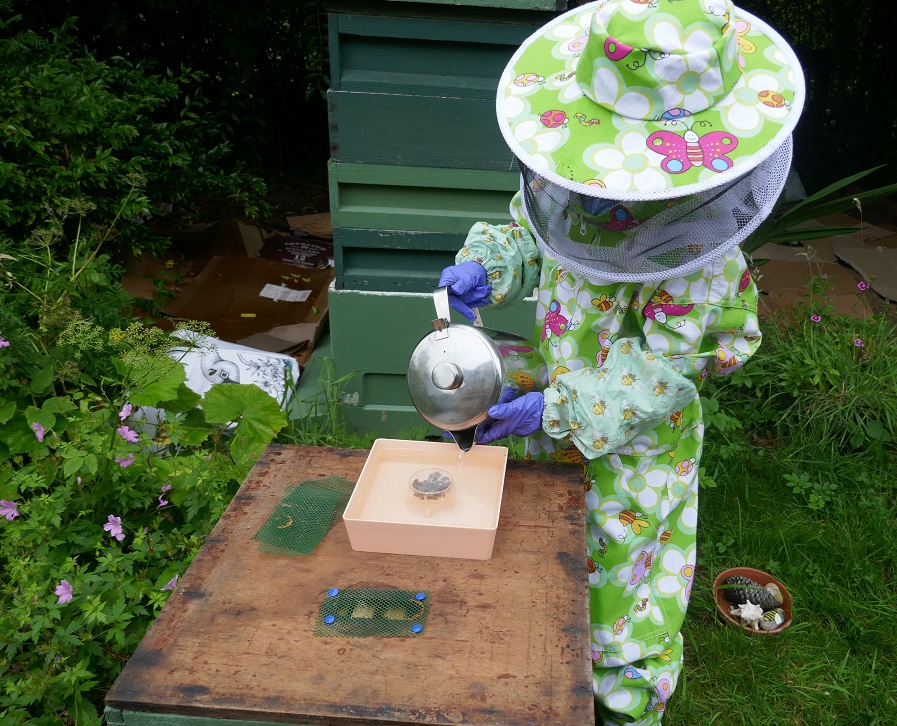
Well, good day Beelistener Readers! I’m up working much earlier than usual on 20th to prepare for driving back down the A9 tomorrow for a Healthy BEES course at Newbattle near Edinburgh. Being awake at the start of the day has many advantages. As I’m preparing my first café latte of the day a red squirrel shoots past the kitchen window travelling at speed through the apiary towards our tiny orchard. I’m wondering if it’s after fruit and I make a mental note to set up some peanut stations. Do squirrels eat fruit I wonder? Why not? Just the other day, I noticed massive small-animal droppings full of cherry stones on the road near a favourite squirrel spot where I walk frequently. I mentioned passing a squirrel on this road in a recent blog. He was there again near the same place but he scrambled up the nearest Scots pine this time and scolded rather crossly as I watched from far below.
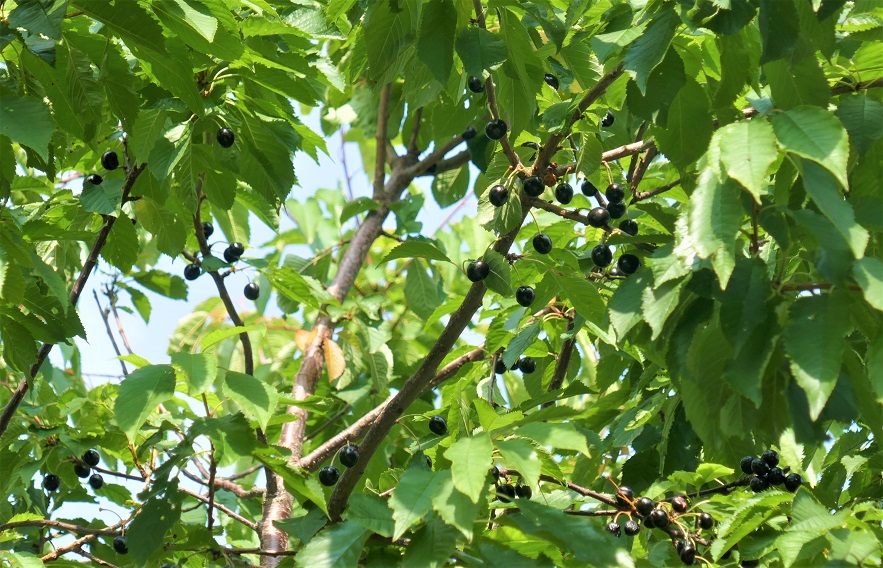
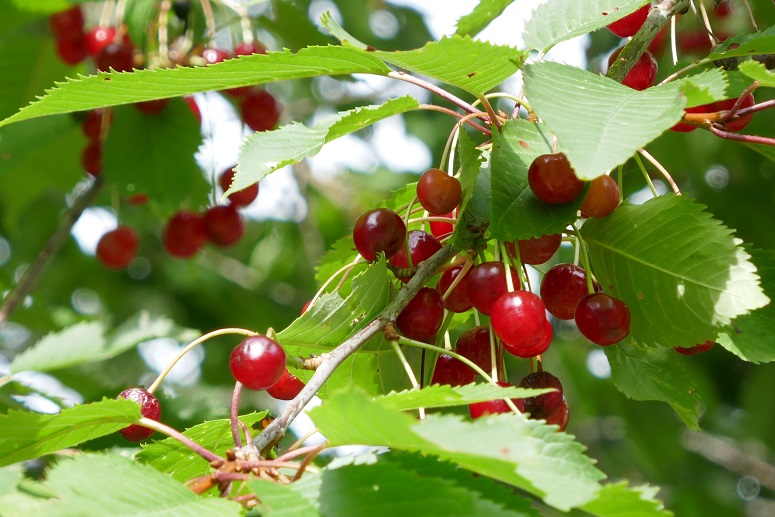
Back to the Apiary.
Connie (8) and I have been working together building up the tiny colony that disappointed us by bumping off Queen Betty 1st and making a new queen. So, we have been boosting it by feeding a strong sugar syrup solution. The usual autumn feed strength is 1kg sugar dissolved in 625 ml warm water. However, at this time of year, I tend to use the “bung” method which involves bunging in as much sugar as will stay in solution. We plan to over-winter this hive above the hive next to it (swarm from Nairn). A mesh floor will separate them so that the queens will not kill each other but warm air will rise up and keep the top lot cosy. You can see the swarm hive in the photo directly behind Connie, and Queen Betty 2nd is just behind that. We are moving the latter hive position gradually so that the colony on top will use a side entrance.

Smoker.
Connie’s really excited about her new smoker and we spend a bit of time learning about the best fuel to use, and how to fill it full enough to keep it going for the length of time we are working in the apiary. The chosen materials to start the flames are the small square hessian pieces that are used to secure the bungs in whisky barrels and they have a lovely perfume. The ones I use come from the Tomatin Distillery as I have a friend who has access to bags of them. We also add dried lavender and thyme which also have a soothing scent.
We wear thin gloves so we can easily monitor the temperature and add green grass to cool down the smoke as required. Our main job is to check if one colony is drawing out foundation for cut comb so we will not be using smoke as it taints the honey, but it’s always handy to have it ready should the colony need to be controlled and prevented from bubbling up out of the top box.

Cut Comb.
Initially we fed a few pints of sugar syrup to encourage the bees to draw out the foundation but we stop now as they are getting on with the job and we have a nectar flow at last. Connie learns to use the hive tools correctly today to remove the frames so that we can rearrange them. We move some of the nectar filled frames to the outside to encourage the bees to finish drawing out remaining combs. So, we place an empty one next to a filling one and so on. This colony produces a lot of propolis that stick frames together so the job is challenging but Connie manages well.
Nectar Flow.
At last the weather is more favourable with warmer August days and we have a nice nectar flow. Connie wonders why the bees are dusty white.
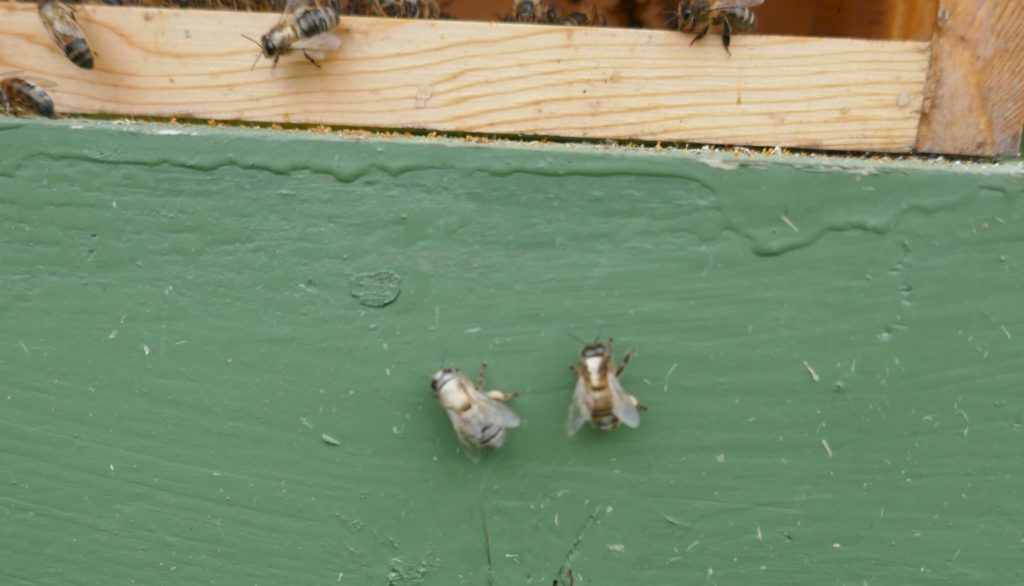
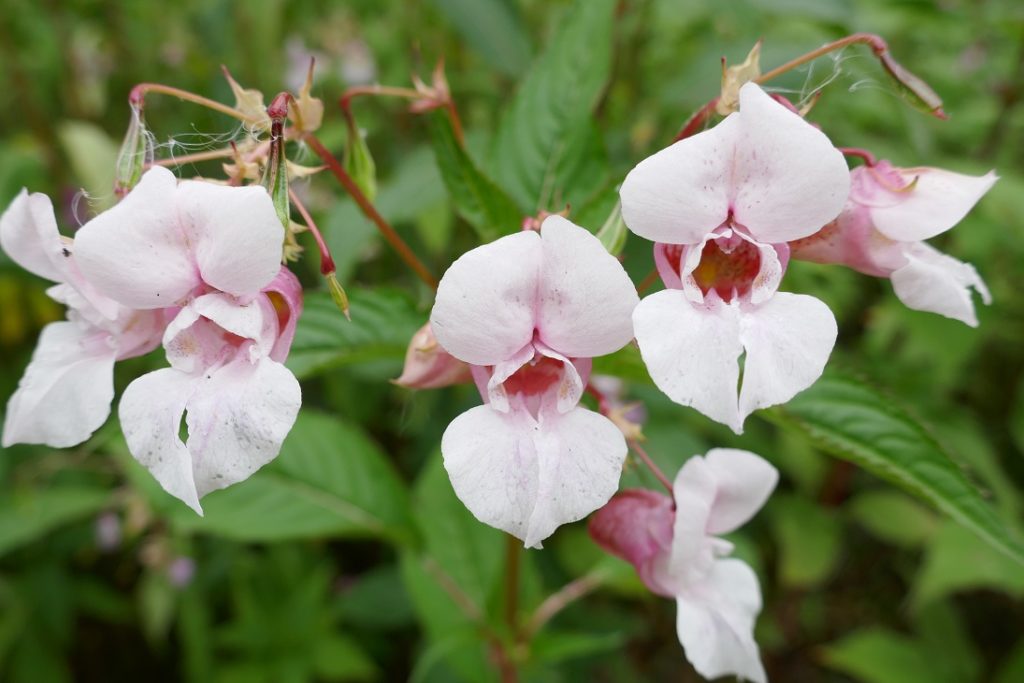
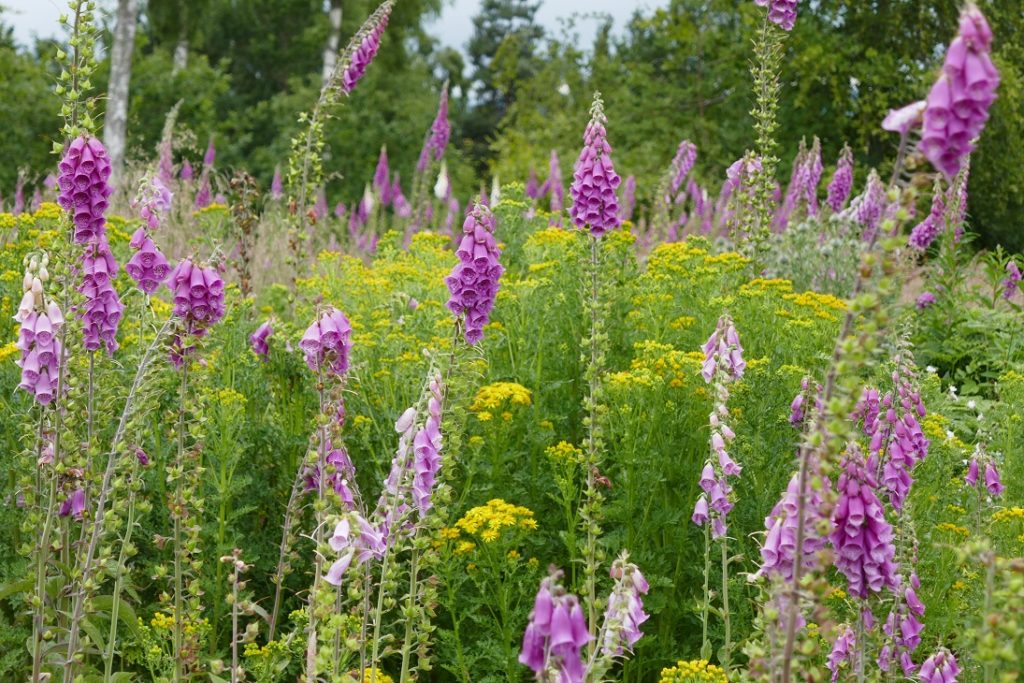
Panacea or Poison?
My friend Marjorie keeps ponies and rigorously removes ragwort from her fields. There are 19 species of the genus Senecio in the UK and the commonest is Senecio jacobea. This pretty yellow plant from the daisy family contains pyrrolizidine alkaloids which are poisons and have a cumulative effect damaging the liver of some animals. It is not known just how many horses and ponies die each year from eating this plant but Buglife states that the lethal volume is 7% bodyweight for horses. Cattle are prone to accumulating it but sheep are less prone to problems.
I noticed a field of cattle grazing a ragwort-ridden pasture in Perthshire on my way home from Dumfries last week and it made me think again about this plant that provides so much for pollinators yet loathed by many landowners.
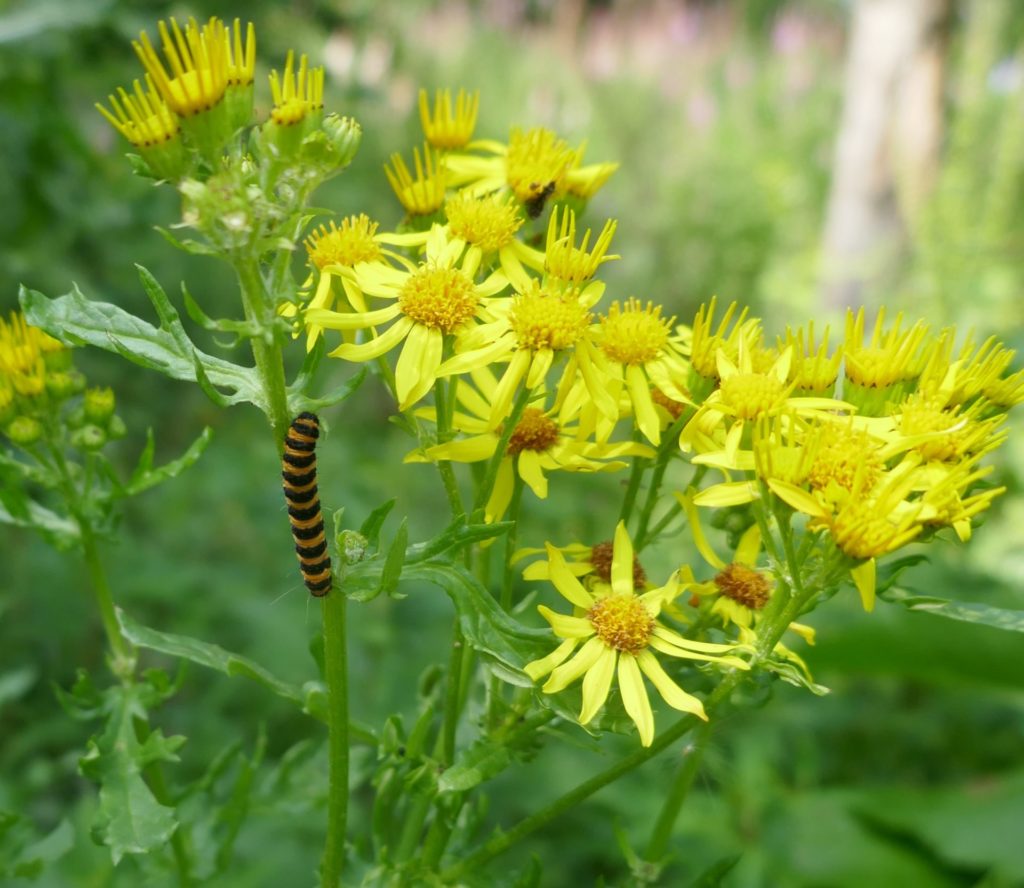
I’ve been searching for years to find one of these colourful creatures and was rewarded on last week’s botany walk when one of the students spotted this beauty. Did you know that ragwort is one of most useful plants for insects that we have with 177 species of insects using it as a pollen and nectar source?
In her fascinating book “Wilding”, Isabella Tree mentions 7 species of beetle, 12 species of flies, the macromoth cinnabar, 7 micromoths, 30 species of solitary bee, 18 species of solitary wasps and 50 insect parasites utilising ragwort. She reminds us of other common species such as foxglove, bracken, elder, yew, and ivy that can also kill grazing animals. Her story of a local vicar eating a bunch of daffodils to spice up his Easter sermon appeals to my sense of humour. Daffodils are one of our most poisonous plants and the sermon was abruptly ended as the vicar was rushed to hospital to have his stomach pumped.
The Law and Ragwort in UK.
It is not an offence to have ragwort on your own land but it is if you enable it to spread to someone else’s land. Generally the seeds fall close to the plant rather than be carried by the wind so you can control it from getting onto your neighbour’s land.
Interesting Insects.
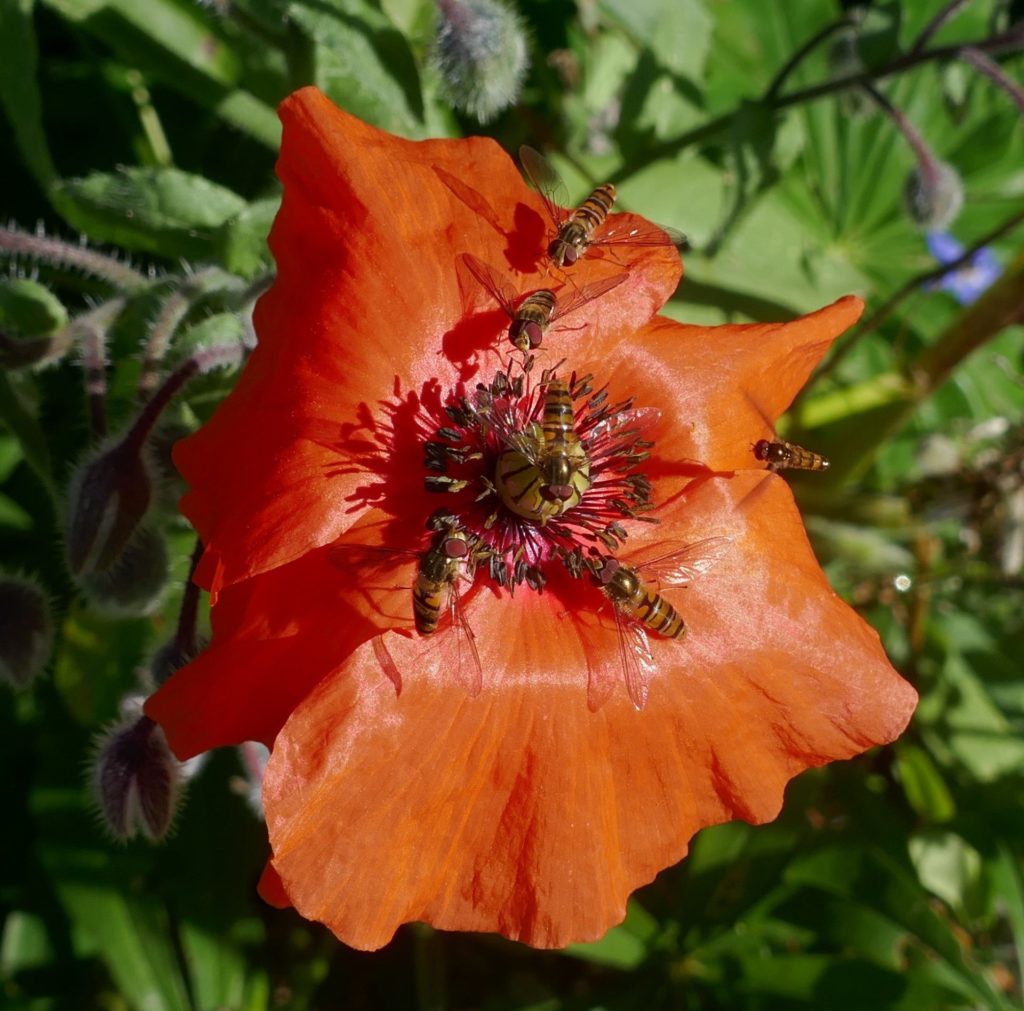
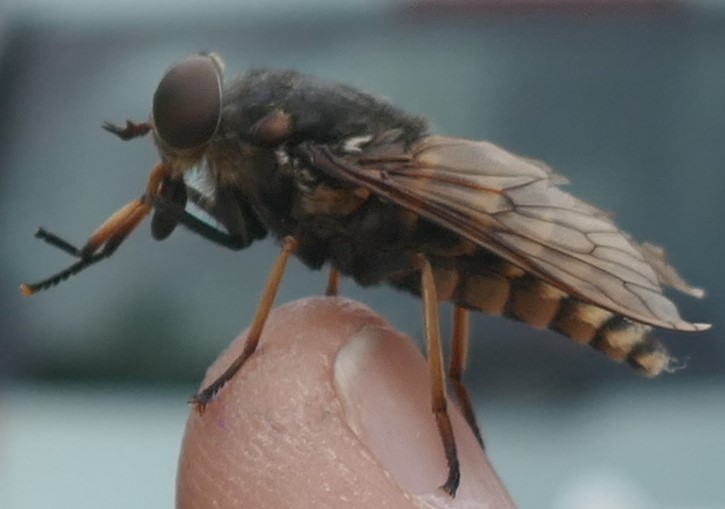
As the season changes, the plangent call of a lone curlew flying overhead, and the returning greylag geese, remind me to make the most of the remaining late summer and get on outside to tidy the apiary and garden.

What a lovely account of your late summer beekeeping and natural world, Ann. Congratulations, too, on finally spying (and capturing?) the larva of a cinnabar moth. Sounds like these moths have plenty of forage (ragwort) where you live.
Thank you for your positive comments, Tom. One of the students spotted the cinnabar moth and (tempted as I was to collect it to observe development) I left it in the south.